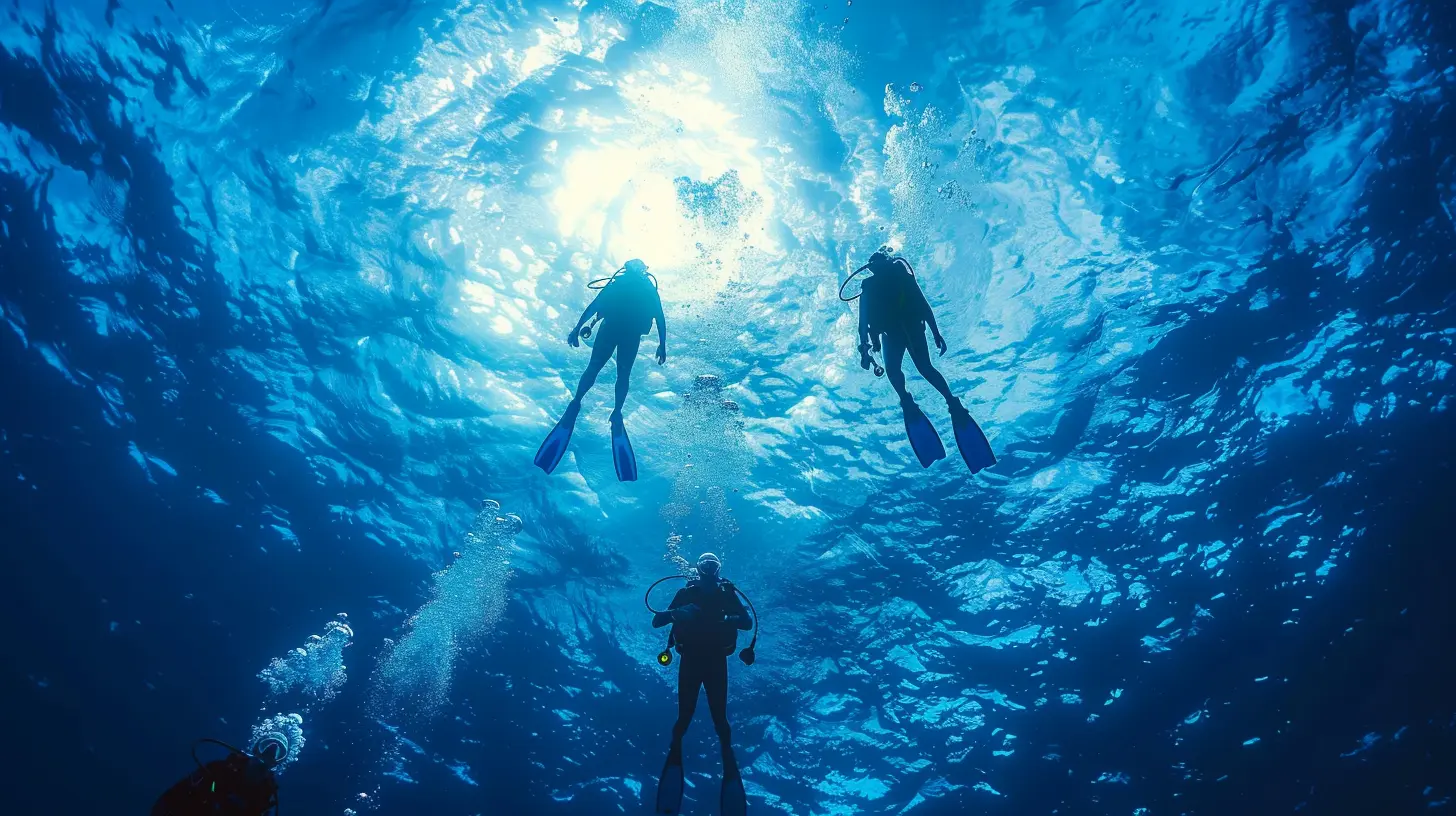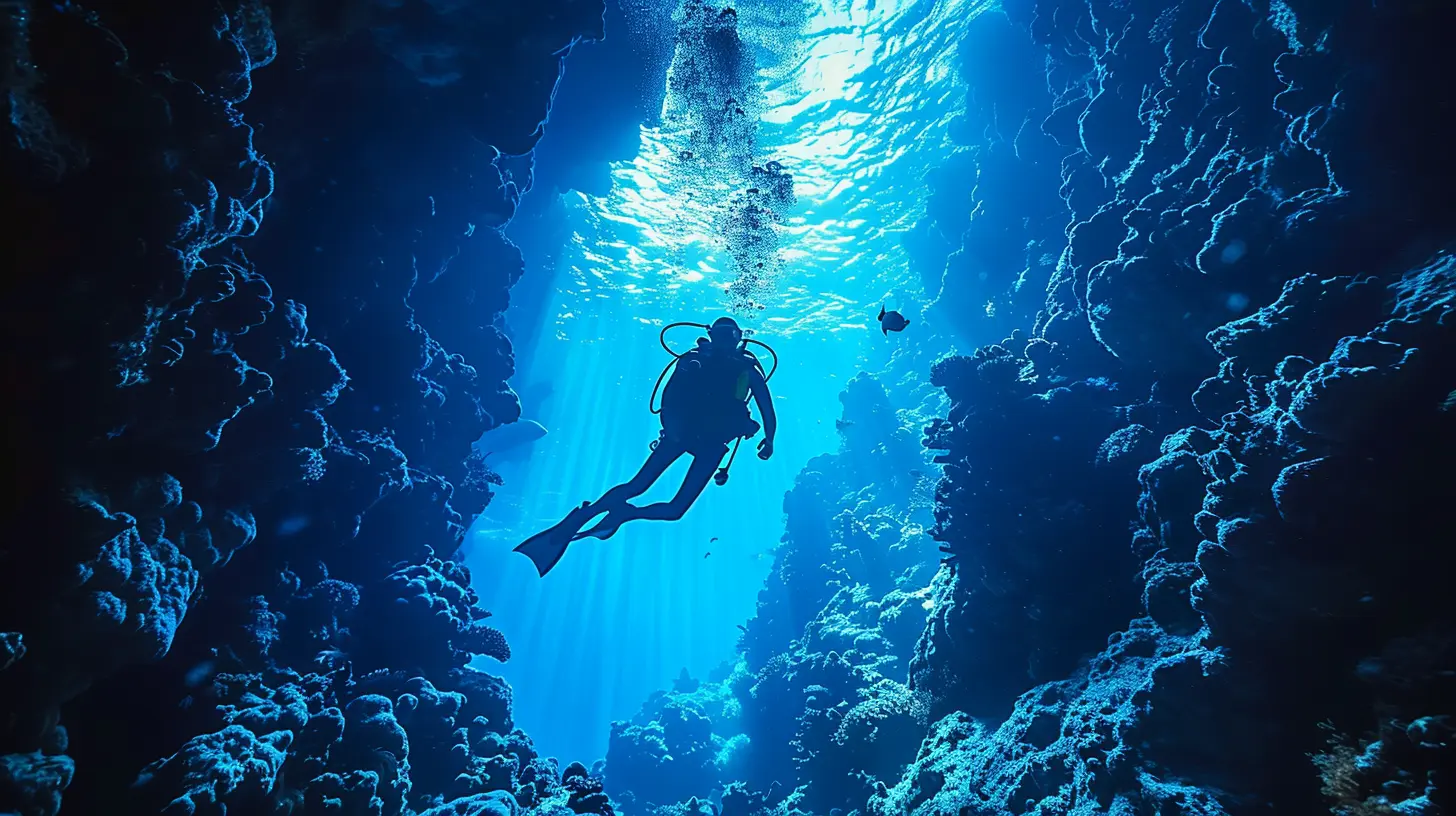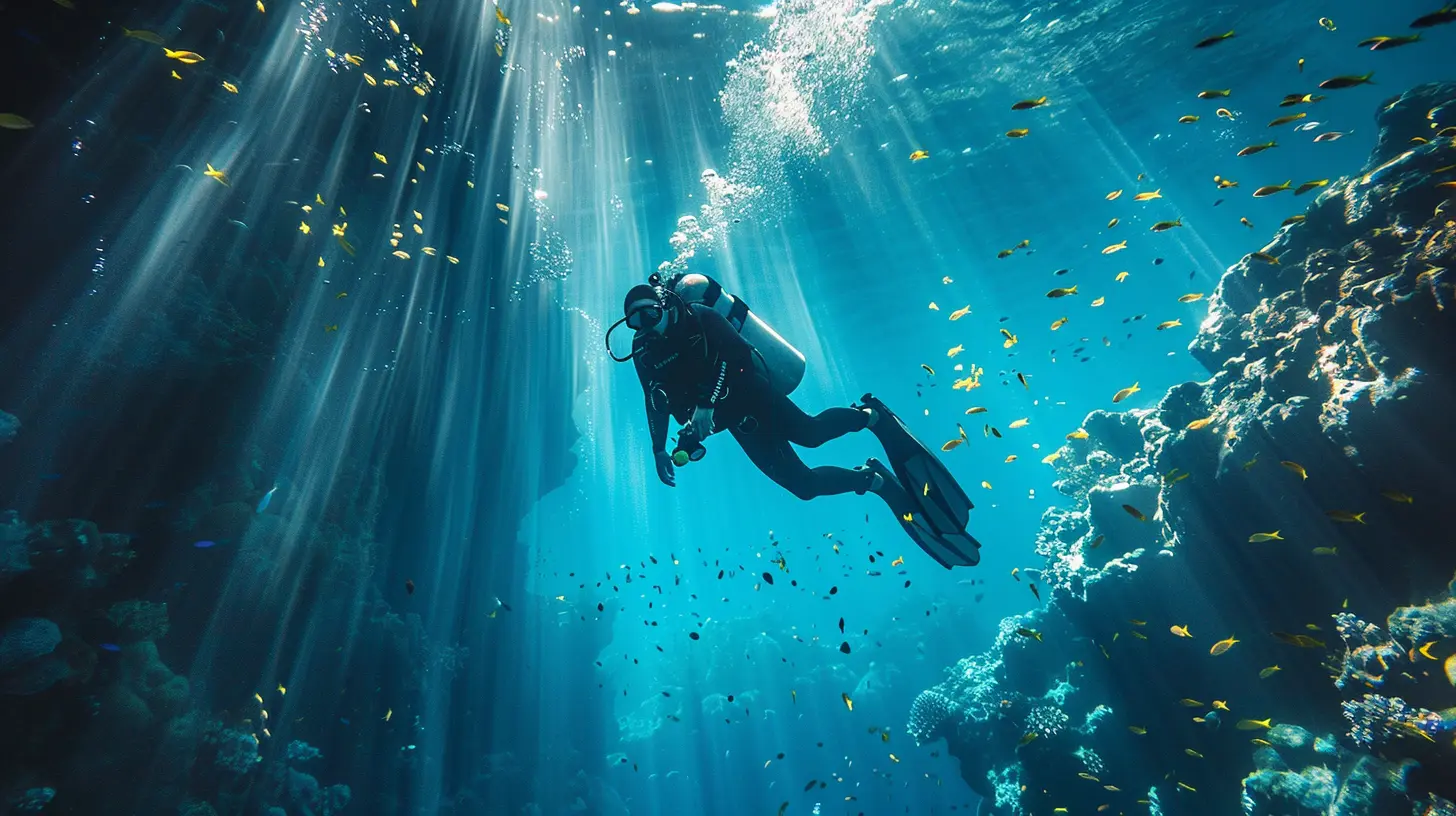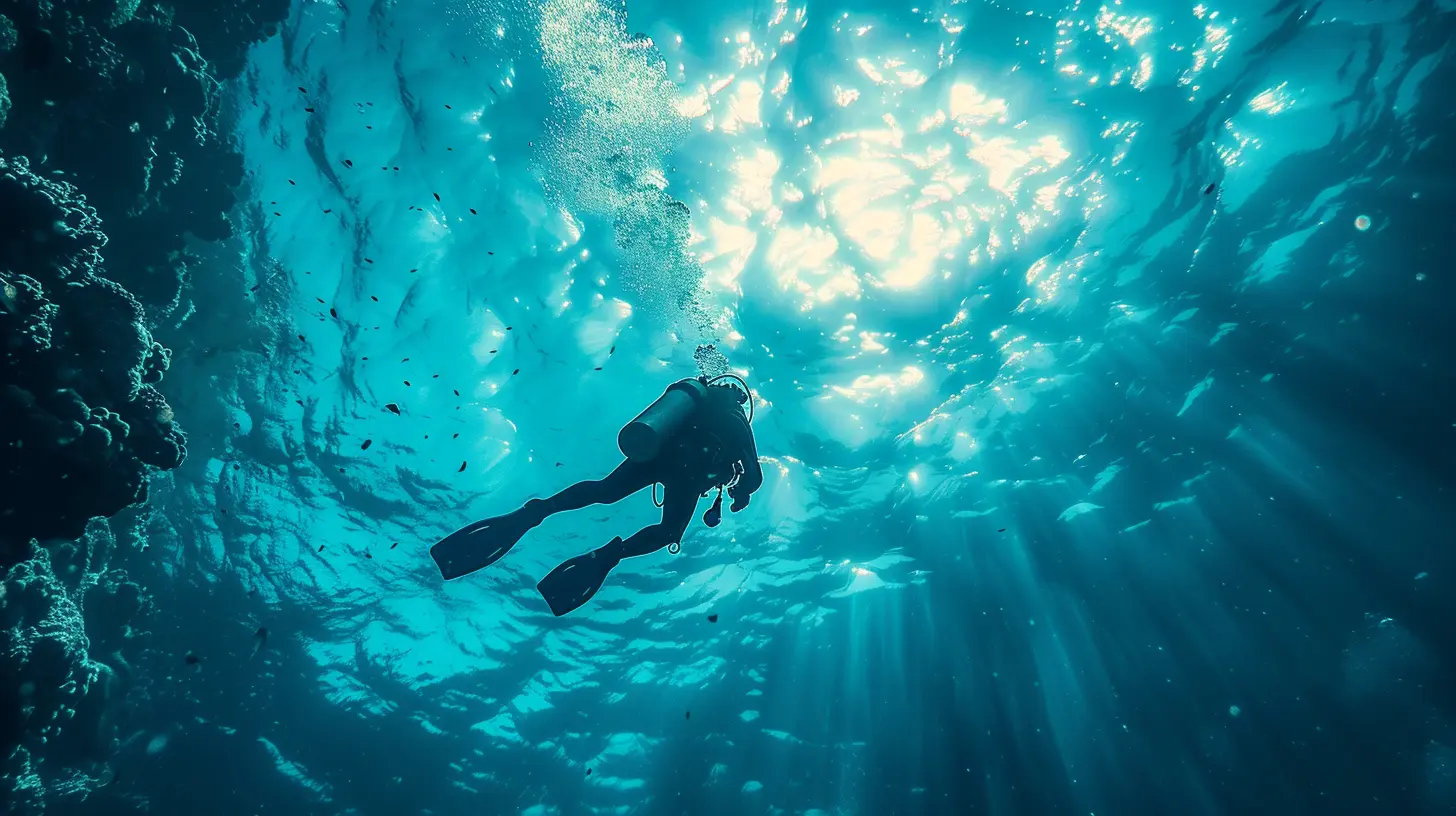Diving into the Deep Blue: The Ultimate Scuba Adventure
7 June 2025
Have you ever dreamed of gliding through crystal-clear waters, surrounded by vibrant coral reefs and mesmerizing marine life? Scuba diving is more than just a sport; it's an adventure into another world—a hidden paradise beneath the waves. Whether you're a seasoned diver or a beginner looking to take the plunge, this guide will walk you through the ultimate scuba adventure. 
Why Scuba Diving Is the Ultimate Adventure
Imagine being weightless, effortlessly floating among colorful fish, curious sea turtles, and majestic manta rays. Unlike snorkeling, where you’re limited to the surface, scuba diving allows you to fully immerse yourself in the underwater world. It’s like stepping onto another planet without leaving Earth.The thrill of exploring shipwrecks, the serenity of drifting with ocean currents, and the excitement of spotting elusive marine creatures make scuba diving one of the most exhilarating and peaceful experiences combined. 
What You Need to Know Before You Dive
Before you strap on a tank and dive into the deep blue, there are a few essentials you should know:1. Get Certified
If you’ve never scuba-dived before, you’ll need to complete a certification course. The most recognized diving certifications are:- PADI (Professional Association of Diving Instructors)
- NAUI (National Association of Underwater Instructors)
- SSI (Scuba Schools International)
These courses teach basic safety, diving techniques, and how to use the equipment properly.
2. Essential Scuba Gear
A successful dive depends on having the right equipment. Standard scuba diving gear includes:- Mask & Snorkel – Allows for clear vision underwater.
- Wetsuit/Drysuit – Protects you from cold temperatures.
- Fins – Helps you move through the water efficiently.
- Buoyancy Control Device (BCD) – Keeps you stable underwater.
- Regulator – Delivers air from your tank to your mouth.
- Tank – Supplies the compressed air needed for breathing.
3. Understand the Basics of Buoyancy
Mastering buoyancy is key to a smooth dive. Too much air in your BCD and you’ll float up like a balloon; too little, and you might sink too fast. The goal is to achieve neutral buoyancy, where you're effortlessly hovering in the water.4. Know the Dive Signals
Since you can't talk underwater, hand signals are crucial for communication. Some basic ones include:- 👍 = "OK"
- 👎 = "Going Down"
- 🤙 = "Something’s wrong" 
Top Destinations for Scuba Diving
The ocean is filled with breathtaking dive sites, but some stand out above the rest. Here are a few must-visit diving destinations:1. The Great Barrier Reef, Australia
The world’s largest coral reef system, stretching over 2,300 kilometers, is home to thousands of marine species. From vibrant coral gardens to deep drop-offs, it offers something for every diver.2. Blue Hole, Belize
An iconic dive site, the Great Blue Hole is a giant marine sinkhole that descends over 125 meters (400 feet) deep. Here, you’ll swim alongside stalactites and encounter unique deep-sea creatures.3. Raja Ampat, Indonesia
This diving paradise boasts the highest marine biodiversity on the planet. The pristine waters are home to manta rays, pygmy seahorses, and hundreds of coral species.4. The Red Sea, Egypt
Crystal-clear waters and historic shipwrecks make the Red Sea a sought-after diving location. The famous SS Thistlegorm wreck is a must-explore for those fascinated by history and marine life.5. Galápagos Islands, Ecuador
For those craving encounters with rare marine wildlife, the Galápagos Islands are a dream come true. Hammerhead sharks, sea lions, and massive whale sharks are common sights.
The Magic of Marine Life
The real stars of any dive are the creatures you meet along the way. Some of the most fascinating marine life you may encounter include:- Turtles – These graceful swimmers often glide past divers without a care in the world.
- Manta Rays – Their elegant, wing-like fins make them one of the most breathtaking creatures of the deep.
- Sharks – Contrary to popular belief, most sharks are harmless and majestic to watch up close.
- Clownfish – Famous thanks to Finding Nemo, these tiny fish live within sea anemones for protection.
- Octopuses – Masters of disguise, they change color in an instant to blend with their surroundings.
Common Mistakes New Divers Make
Diving is exciting, but beginners often make avoidable mistakes. Here’s what you should watch out for:1. Holding Your Breath
Rule number one in scuba diving: never hold your breath. Always breathe continuously to prevent lung over-expansion injuries.2. Rising Too Fast
Ascending too quickly can cause decompression sickness (aka “the bends”). Always follow the safety stop rule—pause at 5 meters (15 feet) for three minutes before surfacing.3. Ignoring Equipment Checks
Before diving, always double-check your gear. A small equipment failure can turn a fun dive into a dangerous situation.4. Overloading on Weights
Too much weight can make diving exhausting. Get your weight distribution right for a more effortless dive.Making the Most of Your Dive
1. Relax and Enjoy
Don’t rush. Move slowly and appreciate the beauty around you. Some of the best encounters happen when you least expect them.2. Take Underwater Photos (But Respect Nature!)
Capturing your underwater moments is fantastic, but never touch or disturb marine life. The ocean is their home—we're just visitors.3. Buddy Up
Always dive with a buddy. It’s not just a safety rule—it makes the experience even more enjoyable.Final Thoughts
Scuba diving isn't just a sport; it’s an unforgettable experience that connects you to the wonders of the ocean. From the vibrant coral reefs to mysterious deep-sea creatures, every dive holds a new adventure. Whether you’re taking your first breath underwater or you’re a seasoned diver, the deep blue will always have something magical waiting for you.So, are you ready to take the plunge?
all images in this post were generated using AI tools
Category:
Adventure SportsAuthor:

Tracie McAdams
Discussion
rate this article
4 comments
Arianth McGrady
Sounds amazing! I'm ready to explore the ocean's hidden treasures!
June 22, 2025 at 4:50 AM

Tracie McAdams
Thanks! Get ready for an unforgettable adventure beneath the waves! 🌊✨
Rebecca Roberts
Forget mermaids—dive deep and meet the disco fish! Who knew underwater life threw the best parties?
June 13, 2025 at 4:23 AM

Tracie McAdams
Thanks for the fun comment! The deep sea truly has its own vibrant party scene! 🐠✨
Talis McGonagle
Great article! The tips on gear and safety are invaluable for beginners. I’m excited to explore these dive sites—thanks for sharing your insights and inspiring my next adventure!
June 8, 2025 at 4:21 PM

Tracie McAdams
Thank you for your kind words! I'm glad you found the tips helpful. Enjoy your diving adventures!
Corin McGivern
Embrace the wonders beneath the waves! Diving into the deep blue offers an unforgettable adventure that connects you with nature and ignites your spirit. Dive in and discover your next journey!
June 8, 2025 at 4:24 AM

Tracie McAdams
Thank you! I completely agree—diving truly opens up a breathtaking world beneath the surface, offering an experience like no other. Happy diving!



